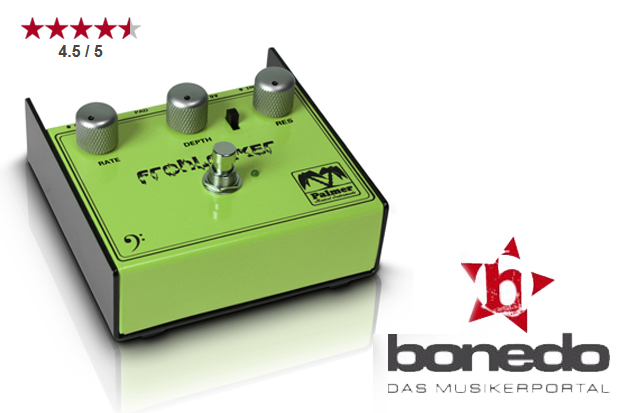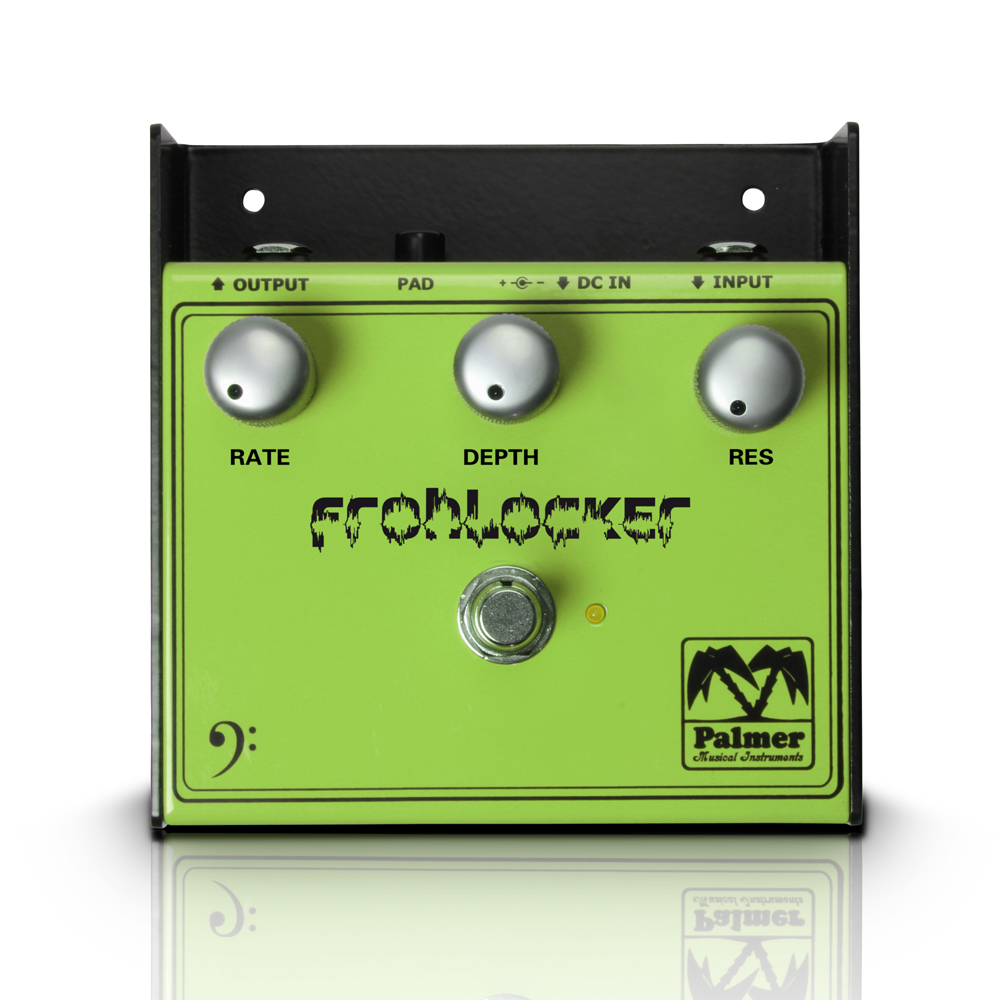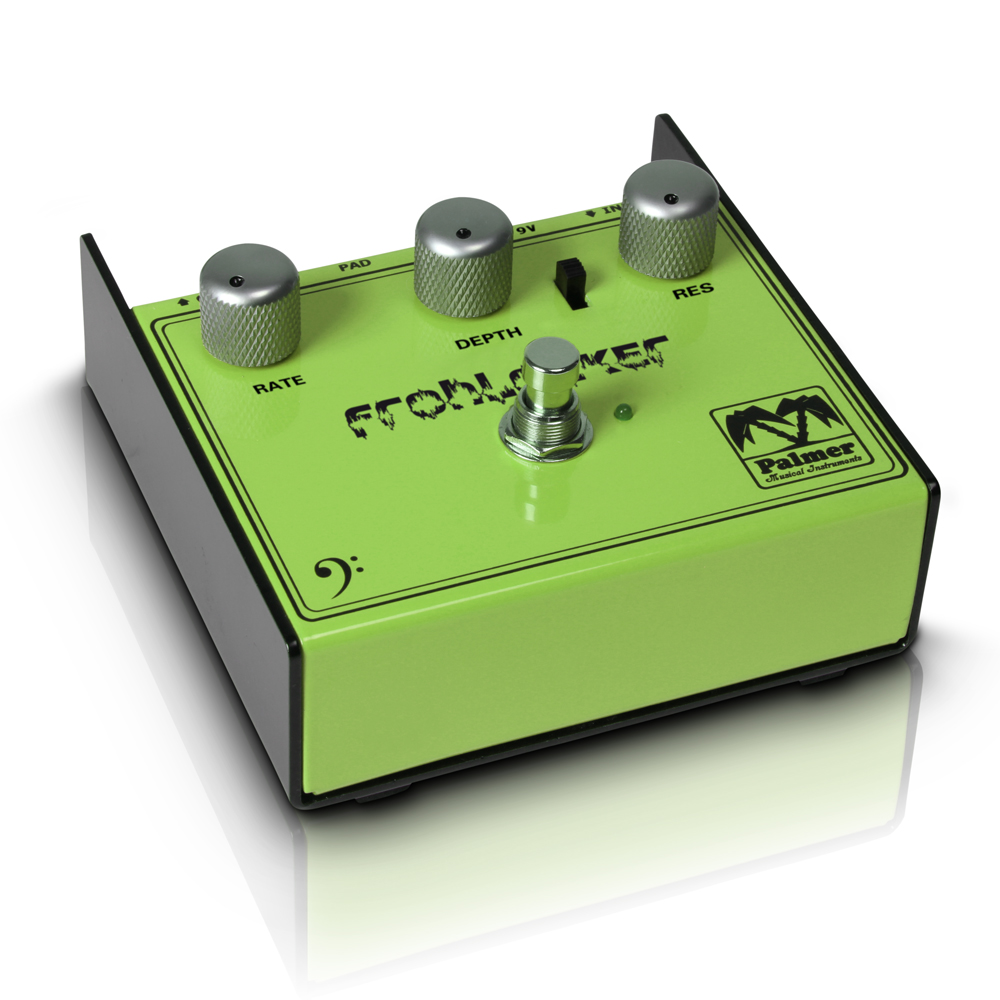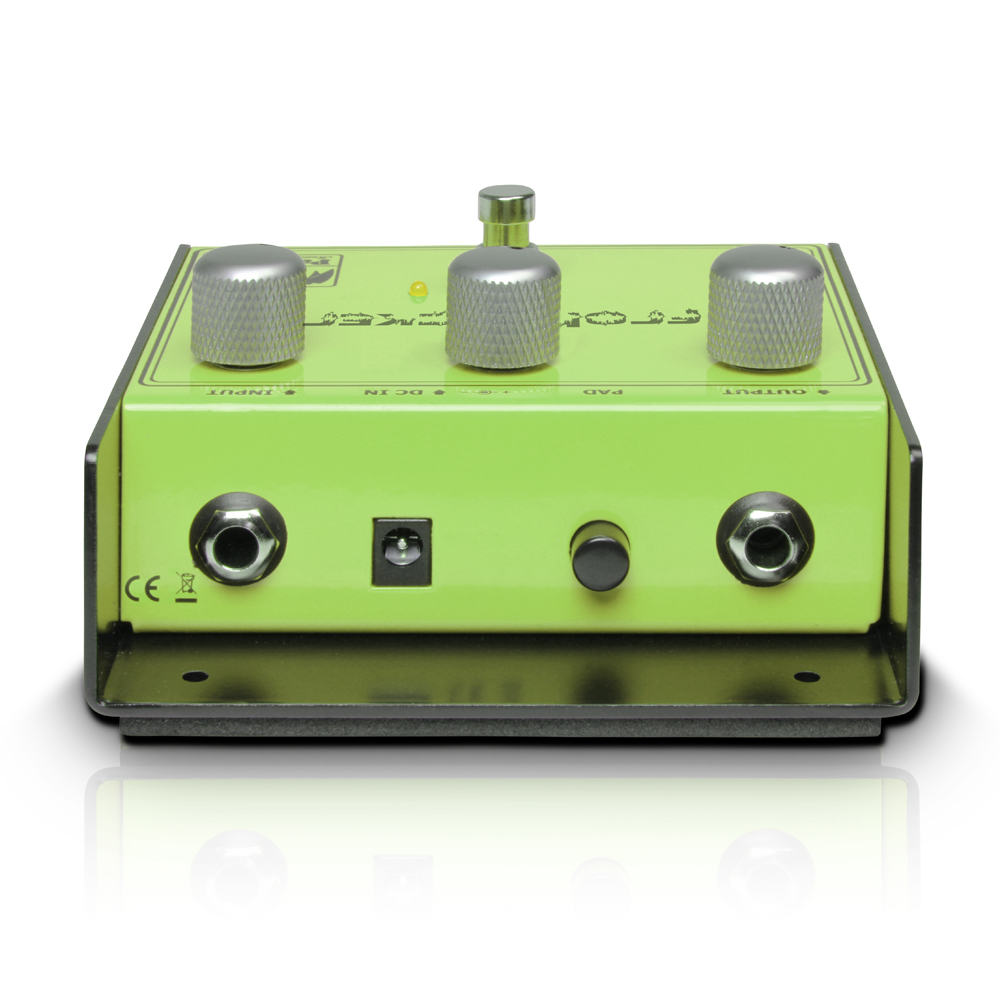Palmer Bass Flanger Frohlocker – Hallelujah Flanger – Test report by bonedo.de
The Palmer Frohlocker tested by bonedo – Over 30 years ago, the German manufacturer Palmer positioned itself as a specialist for sound customisation. What started on a modest scale, blossomed over the years to a respectable name in the industry, with an ever-growing range of high quality audio products. For several years, our guitarists friends have been able to access an impressive range of effects devices, and even us fans of the deep and low have not been forgotten.
The popular “Roots” series also caters for us with pedals for the bass in popular flavours – starting with fuzz and distortion, on to chorus and flanger and up to compressor and octaver. From a wide range on offer, we chose a device with the Christmassy name of “Frohlocker” (frohlocken means rejoice in German) a bass flanger, which must now prove whether there is anything beyond the creative name.
Details These days, ultra-compact mini pedals that take up only a few square centimetres on the congested pedalboard are quite fashionable. The Frohlocker obviously doesn’t belong in that category, because with its 120 x 120 mm it is spreading out quite nicely, at least for a pedal that boasts only one effect. It is very solidly built: the thick sheet of steel is not only extremely stable, but also gives the flanger a high quality appearance – the Frohlocker will resist rough stage use for years to come.

Bottom and side panels of the housing are approx. 2.5 cm longer than the actual device on the rear, and are therefore overhanging. The intention behind this is good : to protect ports and connectors from damage. In addition, there are two holes in the bottom, with the help of which the Frohlocker can be screwed to a board. The housing extension makes a lot of sense, but also complicates the use of angle-or flat connectors that are widely used to save space on compact pedal boards. Except for a cut-out for the battery flap, the bottom of the device is covered with foam rubber so as to better grip the floor when used without a pedalboard. The battery compartment itself is very convenient and allows for a lightning quick change of the 9 Volt-battery. The Frohlocker can also be supplied with a PSU, however, none is included.
The operation of the flanger is very simple because it comes with only three control knobs. When “Rate” is rotated, the speed of the modulation is selected; the “Depth” knob determines the depth of the modulation and “Res” stands for resonance, effectively sending a dose of the effect back into processing. Under these three controls, lies the foot switch to deactivate the effect — by the way all Palmer pedals have a contemporary True Bypass circuit, which when switched off, forwards the signal directly to the output without affecting it. On the back, two jacks are available, one for the connection to the bass and the other for forwarding the signal to the amplifier. A PAD switch is used to adjust the input sensitivity for passive or active basses.

Practice The Frohlocker comes without mix or blend controller; you can therefore not mix the effect as freely with the dry sound as you might want to do. Such a possibility usually makes a lot of sense, especially with bass pedals, because there is always a risk of losing some of the sound strength or foundation when the bass signal is processed by the effects pedal. Therefore, a flanger without mix controller should have a first rate effect sound quality, if it wants to make a lasting impression on us. Palmer Frohlocker does just that, the foundation remains stable even with strong effects and the bass loses very little sound strength. The lack of a mix controller is really no problem for the analog working Frohlocker, at least not from a sound quality perspective. I would welcome such a feature however: with a mix controller, you could definitely achieve different and, above all, more subtle sounds from the pedal. However, this is nitpicking, because the Frohlocker bass flanger can really achieve a lot with its three control knobs. The modulation speed of the rate controller ranges from very slow movements for chorus-like sounds, which make the bass seem broader and spatially wider, to very fast with approximately 280 BPM for more vibrato type sounds. With the appropriate Depth and Res settings, you can also magically obtain heavily distorted sounds from the pedal, that sound pretty weird, and can inspire some creative ideas. No matter whether the Frohlocker is used for such effect escapades or for more subtle sound transformations, it always sounds excellent and offers the effects hungry bassist numerous practical flanger sound variations in spite of its simple design.

Conclusion If you don’t mind the somewhat expansive format of the Frohlocker, you get an excellent bass flanger from Palmer, which leaves the sound strength of the bass intact and the performance enriched with numerous world-class modulation sounds. Craftsmanship and quality are of a very high Palmer standard, and the price for the performance is more than fair. Bassists looking for an uncomplicated flanger with high utility value, should put the Frohlocker on their wish list.
Pro
+ versatile and high-quality flanger sounds
+ easy to use + extremely stable, large roadworthy housing
+ value for money
Con
– clean signal not mixable
All product information can be found here:
http://www.palmer-germany.com/mi/en/FROHLOCKER-Bass-Flanger-Pedal-PEBFRO.htm
Source: http://www.bonedo.de, Germany, December 2013
Author: Rainer Wind
Leave a Comment
You must be logged in to post a comment.











